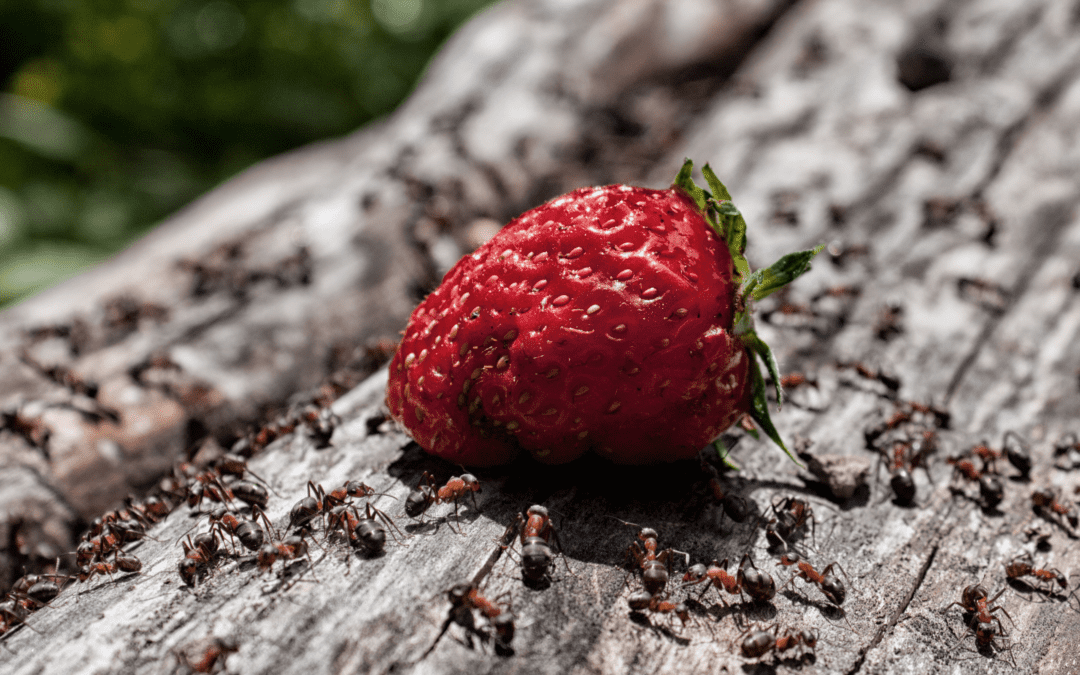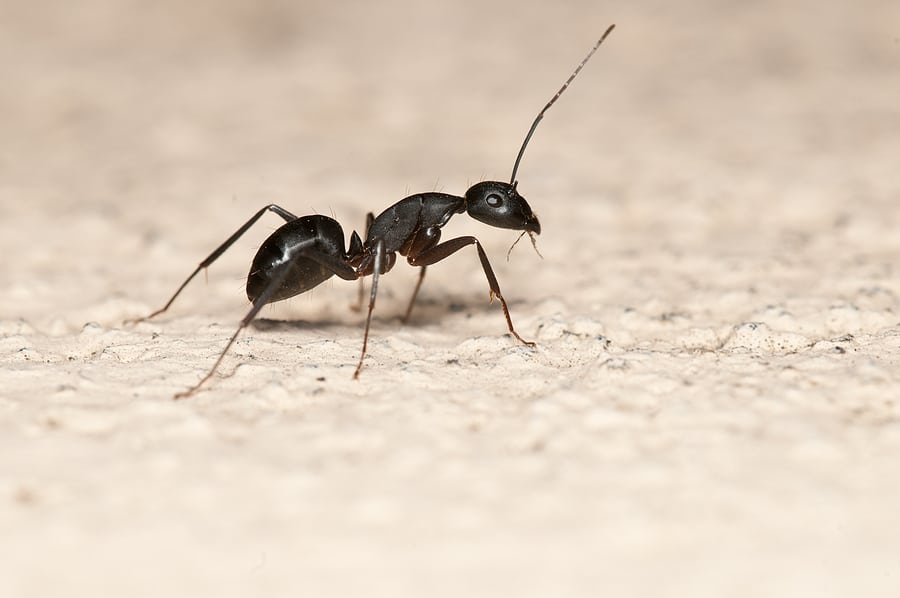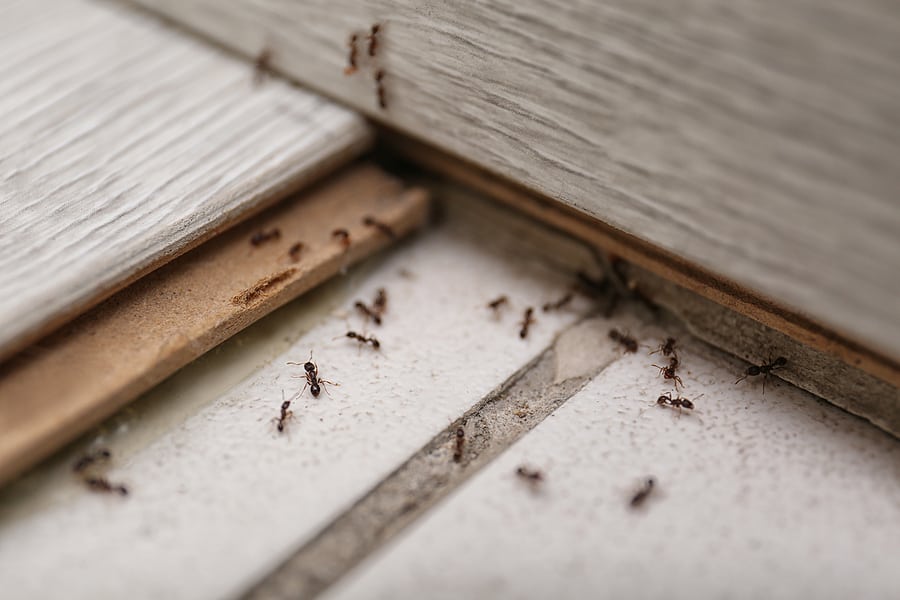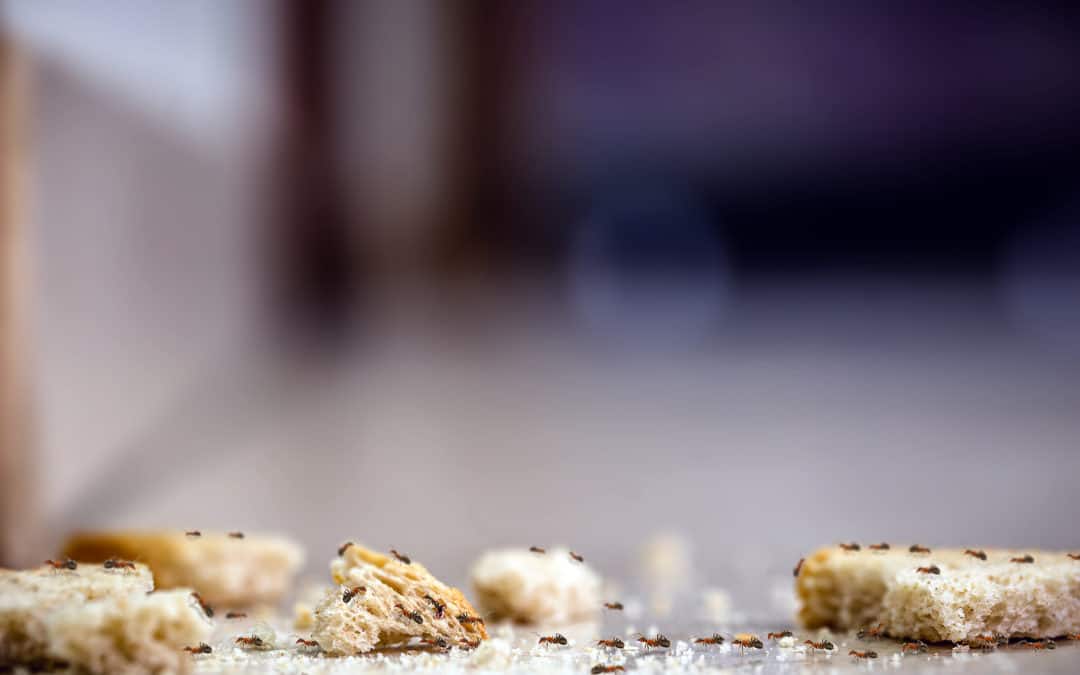READY TO GET STARTED?
REQUEST A FREE ESTIMATE
Fill out the form below or call (888) 466-7849 for a free, no-obligation estimate.

Having an ant infestation is a nuisance to any homeowner, as it can be difficult to control them once they’ve found their way inside. These pests tend to infest areas such as the bathroom and kitchen, searching for a place to nest and a food source. Ants are sneaky pests, often finding their way inside our homes without us even knowing. Check out the top 3 ways you attract ants inside and how you can prevent them in the future.
Ants are very small, making it easy for these pests to get through the smallest hole or gap. Your home’s doors, foundation, windows, and even utility lines can have holes or gaps, creating a way inside for ants. Foundation gaps that aren’t solid concrete blocks can lead to spaces for ants to enter. Likewise, ants will enter through doors or windows that aren’t sealed properly. Take some time and inspect the home’s interior and exterior for these openings.
Did you know ants can travel inside your floors? These pests often establish routes underneath carpets, tiles, and hardwood, making it difficult to spot them entering! Ants will often utilize subfloors, which are made up of pieces of plywood that provide enough space for ants to get inside. Often, these pests will enter through the floors when they’ve spotted a food source, such as leftover crumbs on the floor.
Many times we can bring these pests inside our homes by mistake! Ants can gain access inside by homeowners bringing in a toy or yard item that was left outside long enough for an ant colony to establish inside it. Plants can also carry ants inside when we bring them into our homes for the winter. Other items ants have hitchhiked on include used furniture or appliances, storage boxes, hoses, and even groceries!
There are many opportunities for ants to get inside the home, but with some DIY preventative measures in place, you can help prevent a major infestation. Here are some easy tips on preventing ants:
If you notice an ant problem bigger than you can handle, contact your local pest control company, where they can identify entry points and recommend a treatment and prevention plan.

The kitchen is one of the most common rooms in your home to have ants, closely followed by the bathroom. The most common ants found indoors are odorous house ants, also known as nuisance ants. While these ants don’t cause structural damage and aren’t considered dangerous to humans or pets, they can contaminate your food and become quite a nuisance to deal with. Carpenter ants are larger black ants that can also get into your home. These ants do cause structural damage by boring through the wood components of your house.
The ants you find in your home don’t actually live there; they build colonies outdoors and come in looking for food and water to take back. These elements are necessary for the colony to live and grow. Scout ants who find these sources leave a pheromone trail for the rest of the colony to follow which is why you will often see ants traveling in a single line. Because they can scale walls and travel between stories in your home, they can spread quickly and be extremely difficult to get rid of.
Ants are attracted by a number of things found in your home. They use crumbs, spills, loosely sealed food packages, dirty dishes, and even pet food bowls to find food. They use leaky pipes, pet water bowls, and standing water for hydration.
What can you do to keep ants from taking over your kitchen? Prevent ants by:
Killing just the ants you find in your home won’t eliminate the entire infestation. You must eradicate them at the source – at their colonies. These ants can be difficult to eliminate because individual colonies can number in the thousands and they can be spread out all over your property. For assistance in dealing with ants or any other pests you may find in your home, contact your local pest control company for an evaluation.
9 Easy Ways to Keep Birds Away

Ant season peaks in the spring and summertime, with these pests oftentimes finding their way inside your home. But did you know that carpenter ants remain active throughout the year? In return, they can cause damage to your home and infest.
Carpenter ants will nest in damaged wood, usually softwood damaged from water. Carpenter ant damage includes excavating wood to expand their nests, often making holes throughout exposed wood. If these ants are found inside, it is also an indication that there is a water issue, such as a leak.
While these ants are most active in the spring and summer, they are also known to infest homes during the winter months, as well. They will forage for food and water, looking for proteins, fats, and sugars. Once inside, these ants will look for a moist environment to help them survive. They can often be found in bathrooms, kitchens, pipes, and roof vents.
While carpenter ants do not die off in the winter months, they will instead become dormant when the temperatures drop. This usually depends on where they have built their nests and how much the temperature has dropped. If they have already found themselves inside, they will remain active or revive from their dormant state once the heat from the house has risen.
To prevent ants from entering your home this fall and winter, consider placing these preventative measures throughout your house,

Little black ants are a common household pest usually seen in larger swarms during the warmer months of the year. These ants can be a huge nuisance, commonly infesting areas such as the bathroom and kitchen, searching for food and a place to nest. Once ants become a problem, it can be difficult to control them; but with some easy preventative measures, you’re less likely to encounter these pests!
Ants are always in search of food. Eliminating any food source that they have easy access to will be a major part of preventing them. After every meal, wipe down countertops and tables of any food crumbs or spills left behind. Don’t forget about your appliances either; ensure that your stove, microwave, and sink are also cleaned frequently. To prevent these pests from infesting your pantry, use sealed containers for any dry goods. Consider placing a bay leaf in canisters of dry food like flour to repel ants.
To survive, ants need water. Eliminating moisture throughout your home is key to ant prevention. Take some time to look around the interior and exterior of your home. If you notice any leaks, make sure you repair them immediately. Check your gutters often to make sure there are no clogs. Consider installing gutter guards to help prevent clogs. Additionally, make sure that the downspout is directing away from your foundation.
Being as little as they are, ants only need a small gap or hole to make their way inside. It’s essential to identify entry points and seal them properly to avoid infestation. Look around the interior and exterior of the home to look for these gaps. Popular places include areas where pipes and wires enter your home. Check your windows and door screens for any open holes and replace weatherstripping frequently.
Preventing ants can be difficult and feel impossible. If you’ve noticed an increase in ant activity around your home, consider contacting your local pest control provider. These professionals will complete a thorough and comprehensive treatment and control plan.

Ants are considered one of the most pesky nuisance pests homeowners must deal with. Ants will often enter homes during the winter, seeking water and food for survival. Now, with the weather warming, is the perfect time to start putting preventative measures in the most common places ants are found – the kitchen and the bathroom!
The kitchen is an ideal place for ants to infest. These pests are constantly searching for a water source, and the kitchen is the perfect place to find it. If the kitchen isn’t cleaned frequently and thoroughly, ants will invade quickly. Use these ant prevention tips to keep ants out of your kitchen:
The bathroom is highly vulnerable to an ant infestation as all the excess moisture will attract them. Carpenter ants will build their nests in damp areas, such as behind bathroom tiles or under sinks. To prevent ants from infesting your bathroom, take these preventative measures:
If you’ve noticed an influx of ants inside your home, consider calling your local pest control company. Trained service professionals will set you up with a prevention and treatment plan to help prevent these pests during peak ant season.